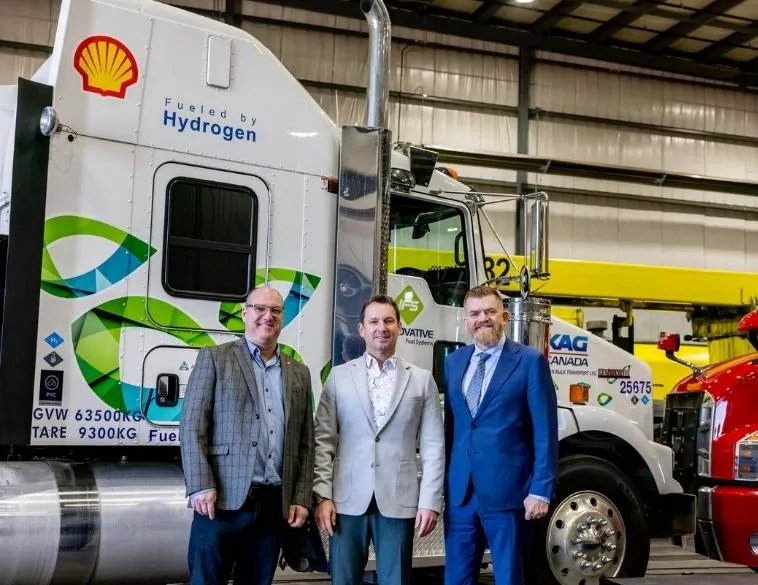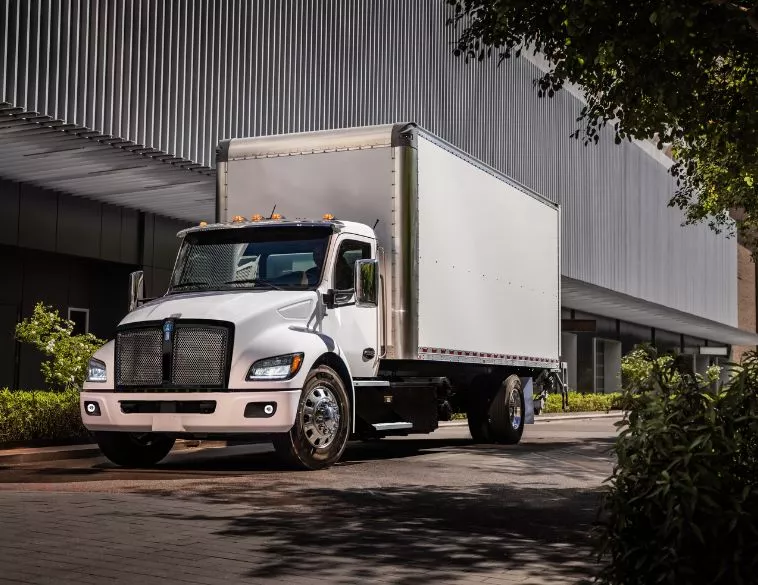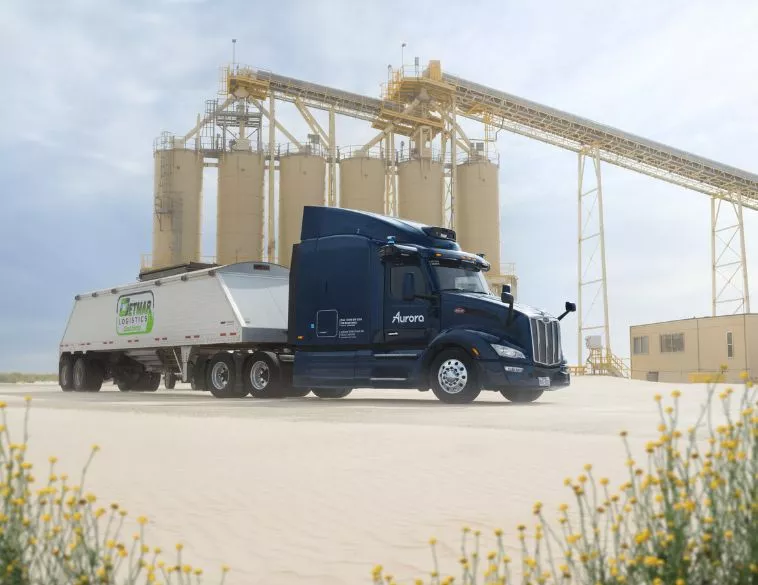The Dual-Fuel Dilemma

Try before you buy, if you’re thinking of converting your fleet to run on alternative fuels.
In March of this year, in a joint press conference, KAG Canada and Innovative Fuel Systems (IFS) announced that KAG Canada had been testing a hydrogen dual-fuel-powered heavy-duty truck powered by IFS’ patented Multi-Fuel Technology Platform (MFTP).
In addition, for more than three-and-a-half years, KAG Canada has been using this same MFTP system with natural gas, resulting in reduced emissions and an average fuel cost savings of 15%.
MFTP is a retrofit system that can be used on heavy-duty trucks to allow a diesel engine to offset diesel fuel usage by combining diesel fuel with a variety of cleaner burning fuels including compressed natural gas (CNG), renewable natural gas (RNG), and as noted above, even hydrogen.
KAG’s long history
What started as a small fleet based in Moose Jaw, Saskatchewan in 1964, has grown exponentially over the past 60 years. Today, KAG Canada has roughly 1,200 power units and 2,700 specialized trailers, all of which are used to haul bulk commodities, says Chris Chapman, Vice President of Fleet Services at KAG Canada.
Like most companies, KAG is concerned with their carbon footprint and with the need to cut fuel consumption and costs. With that in mind, they’ve been experimenting with alternative fuels, which is how they got involved with the dual-fuel system from IFS.
“Right now we have six dual-fuel units, three in Eastern Canada and three in Western Canada,” Chapman says. “The system we’re using is a refit on existing diesel engines, so you still have diesel fuel and you’re still using a diesel engine. You just add an extra tank for natural gas.”
When it comes to the actual modification of the truck, Chapman says that fleet managers can choose to either take one of the existing diesel fuel tanks off the truck and replace it with tank for natural gas, or they can opt to keep both diesel tanks on the truck, and add a natural gas tank to the back of the cab.
Getting started
KAG’s experiment with natural gas started in 2021. “We initially had five trucks, and then we added another,” Chapman recalls. IFS supplies KAG with kits that are fitted onto each truck, and Chapman says that he has more of these on order as he he looks forward to equipping more trucks with this dual-fuel capability.
“We’ve done the pilot project and we have proven that the technology works,” he says. “We’ve also proven that we will see savings and that it makes sense from a total cost of ownership perspective.”
Moreover, Chapman notes that investing in this technology makes sense whether or not a fleet has government support. With government support he’s seeing a payback in about two to three year, and without government support, it’s about five or six years.
“We keep our trucks for about five or six years, and then we turn them over,” he adds. “So that works out well because these kits can be taken off the trucks, if we want to sell them, and we can then install these kits on the next batch of trucks. Since we already paid for the kits, it’s all 100% savings on the next batch of trucks.”
Carbon footprint vs. reality
While Chapman admits that one of the goals KAG had in mind when investing in this technology was the company’s carbon footprint, he notes that you can’t always press ahead with greener technologies without considering all the factors.
“While your carbon footprint is top of mind,” he explains, “you need to figure out a way to reduce it without sacrificing payload and reliability. The last thing you want is to convert your fleet to 100% natural gas or hydrogen and then find out that this technology isn’t going anywhere. In the end, you have a fleet of trucks you can’t use anymore.”
KAG started out with dual-fuel applications mixing diesel fuel with CNG. That’s been successful and in place for a number of years. Mixing diesel with hydrogen, however, is another matter.
“We started the hydrogen trial last November, and it lasted until this March,” Chapman says. “We wanted to see how it would compare with natural gas, and to see if it would be practical, and if it could work for us.”
Although the trial went well, and Chapman notes that the technology works as advertised, in the end, KAG decided that it wasn’t the right dual-fuel approach for them, at least not for now.
“The hydrogen itself is very expensive,” Chapman admits. “It’s four or five times the price of natural gas. It would take a while to see the return on investment.”
Both the CNG- and the hydrogen-powered trucks performed very well, Chapman adds, and the payload was comparable. “They both performed like a commercial truck should,” he adds. “The issue was the lack of hydrogen infrastructure and the fact that an engineer had to fuel up the trucks because the drivers weren’t allowed to do it themselves.”
Practicality was a huge issue since hydrogen fuelling stations are very rare. In contrast, Chapman says, the natural gas infrastructure is much better and drivers can fill up the tanks themselves.
Ease of use
When it comes to mixing diesel with natural gas, the process couldn’t be easier. Once the dual-fuel kits are installed, all the drivers need to do is fuel up. They never need to flip a switch, and they never notice a difference in the way the trucks perform.
“Drivers get special training on how to fuel up with CNG, otherwise it’s like a normal truck,” Chapman explains. “It starts like a normal truck, it drives like a normal truck, the horsepower is the same, and it even sounds the same when the engine is running.”
The only thing drivers need to keep in mind is that they must remember to fuel up properly. “You have to fill these trucks with diesel and with natural gas,” Chapman explains. “If you run out of diesel, the truck quits. It will not run on natural gas alone. But if you run our of natural gas, you can still run on diesel.”
Chapman stresses that this is not a 100% natural gas engine. “It is a diesel engine with natural gas injected into it,” he says. In other words, the diesel is mixed with the natural gas inside each cylinder, which in turn cuts down on the amount of diesel fuel required.
The bigger picture
When it comes to reducing the size of their carbon footprint, Chapman says that he has a number of projects in the works. Adding more of these dual-fuel kits to a truck costs anywhere from $60-$80k, he says, but it’s well worth the investment. “We’ve got a few natural gas kits on order,” he adds, “so we’re definitely going to continue doing that.”
In addition, Chapman is considering other sources of diesel fuel. “We’re going to partner with oil companies that have developed low-carbon diesel fuel,” he says. “Combining low-carbon diesel fuel with CNG should be an interesting mix.”
He’s also investing in ways to reduce idling, improve aerodynamics, and improve rolling resistance with SmartWay verified tires. “These are all part of our larger ESG initiative,” Chapman concludes, “and we’re proud of all the steps we’re taking.”







